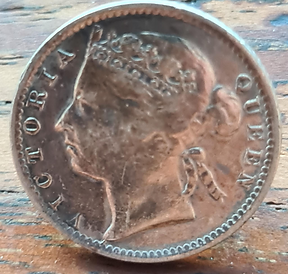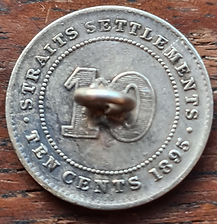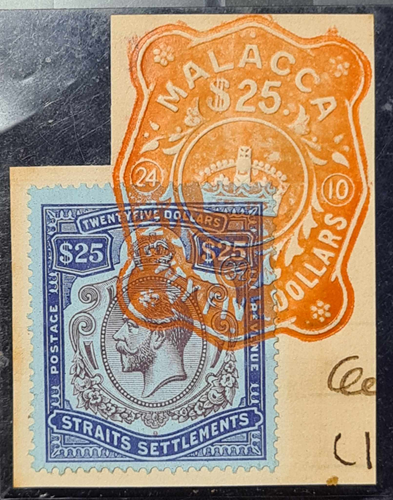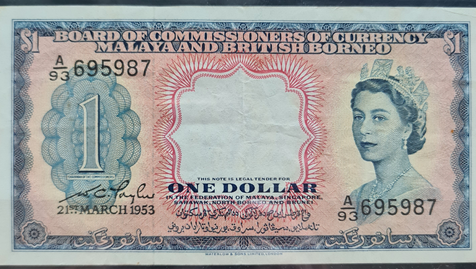Kingdom of Melaka
The Kingdom of Melaka was also known as the Melakan Empire. By the mid-1400s CE, it covered most of the Malay Peninsula and parts of eastern Sumatra.
Melaka was strategically located on the trade route between the Indian subcontinent and China. It also had a safe harbour. This made it attractive for traders to stop at Melaka to rest and replenish their supplies.


Malacca 18th-century wooden frame bronze copper engraving top ( Consignment )
S$800
SKU: Consignment Member Tuchin Wong

MALACCA PRIVATE MINT CHINESE CASH TIN COINS

马六甲华人铸造的汉字锡钱十五世纪
明朝:韓利宝嫁到马六甲所发行的汉空中丹利宝锡钱 之 不同版别 简子钱

有字小型

景祐元宝


绍聖元宝

榆英型
古代马六甲皇朝钱币,公元1400年-1511年 Ancient Coin of MALACCA Empire 1400 - 1511



葡萄牙占领马六甲钱币 公元1511年-1578年 Ancient Coin of Portuguese Malacca




Beautiful Malacca Old Picture Post Cards
Explore : Click the image to read the describtion

The culture of Malacca, Malaysia, is a fascinating blend of Malay, Chinese, Indian, and Portuguese influences, reflecting its rich history as a major trading port.
Key aspects of Malacca's culture:
Multiculturalism: Malacca is home to people of various ethnicities, including Malays, Chinese, Indians, and Baba Nyonyas (descendants of Chinese immigrants and Malay women). This diversity is reflected in the city's festivals, food, and architecture.

Malacca was once the world's merchant gathering point enabling the birth of Baba and Nyonya ethnic group

Malay Dancing Girls, MalaccaMelaka? Joget (Jawi: جوڬيت) is a traditional Malay dance that originated in Malacca in the colonial era

Malay Women, Malacca.
Peranakan Culture: The Baba Nyonyas, also known as Straits Chinese, have a unique culture that blends Chinese and Malay traditions. Their cuisine, clothing, and customs are a distinctive part of Malacca's heritage.
Peranakan Culture: The Peranakan people, also known as Baba Nyonya, are descendants of Chinese immigrants who settled in Malacca and married local Malay women. Their unique culture, which blends Chinese and Malay traditions, is a significant part of Malacca's heritage.
Peranakan

The most common central design for the lower or large panel in altar cloths are the Chinese auspicious motifs of dragons, qilins and the three gods of prosperity, good fortune and longevity (Hock Lock Siew).
For the top panel, the most common designs are also drawn from Chinese mythology, including the eight immortals, Chinese phrases of filial piety and auspicious sayings, pairs of dragons, qilins and phoenixes.

Altar cloth Early 20th century Batik
H:10.4 x W:110 cm






The design feature Chinese auspicious motifs of qilins & Chinese chracter "Jade Book" on top the qilins.
Cross Stich Embroidery Use in marriage ceremony Cotton Approx. H:66 x W:50 cm
Peranakan Bantal Kepala

Early 1900s Peranakan Straits Chinese Bantal Kepala Octagonal Repoussed Silver Pillow Bolster Ends
‘kepala bantal’ (the Baba Malay term for ‘pillow head’) or bolster ends, features auspicious motifs. This pair of kepala bantal was used by Peranakan Chinese to decorate the wedding bed. The use of such symbols of fertility reflects the desire for the new couple to have many heirs.



Malaya 19th century Malay Silver Caping/ Modesty Plate/ Disk Size:6.5 × 5.8 x 1cm


Plate/ Disk Size: 8×7.7x1cm


This infant's silver modesty plate, also known as caping, is shaped like a heart. It is decorated with designs, like smaller heart, leaf and flowers.
Caping plates has been used as a substitute for loin cloth and were usually worn by little children. These modesty discs are usually shaped in the form of a fig leaf, and since the 20th century have become elaborately embossed. Caping is thought to be introduced into the Malay Peninsula by Indians during the Srivijaya period from around the 7th to the 13th centuries. Initially, they were mostly worn by little girls in the North and East coast regions of the Peninsula. They were made of different materials depending on the social status of the family. Gold was used for royalty, silver for dignitaries while brass or copper was used for the lesser affluent. Babies wore capings as soon as they were able to stand, usually around the age of one. A simple ceremony was performed, where prayers and food offerings were made for the child.
Straits Chinese hairpin


Late 19th – early 20th century Dimension Object 6 pcs difference size: L 8 to 13 x W 1.3

Peranakan Silver Belt Vintage. Length is about 97 cm.


Peranakan Belt Bucker Vintage 娘惹腰带扣 复古设计

Vintage Singapore Straits Settlement Silver Belt with 1921 King George V Coin Head Buckle Length 198 cm


Silver Belt buckle 1899 QV Coin


Peranakan Culture : Agroup of 8 silver coin buttons l, including Straits Settlements Qeen Victoria, H.K Qeen Victoria & U.S.A. The practice of using coins as buttons was particularly common among the Peranakan community.



A GOLD KERONGSANG SET Each brooch designed in the shape of bird

Apart from attire, another hallmark of the Baba and Nyonya identity is its distinctive cuisine.


Nyonya Kuih



Unforgetable Malacca
Christ Church

Malacca Unforgettable "Natural Color" Serie Scroll Booklet Greetings PPC With 14 Scenes 1967, Pub. by: A.S.M.K. & Co. Post Box No. 2919, Singapore - 6. A.F. No. 9





THE OLD FORT MALACCA

The Old Fort of the Dutch period, located at St. John Hill, Malacca,. it has a very historical background.






VIEW FROM A CANNON HOLE, Malacca. A typical Malaysian coconut tree swaying to the gentle rhytmn of the breeze a symbol of Malacca's pride.
Chinese Temple

Cheng Hoon Teng Temple, founded in 1646 is the oldest Chinese temple in Malaysia.1704年建立のチェン・ホン・テン寺。マレーシア最古の仏教寺

Colony Malaya Malacca
PATRIOTIC AND PROPAGANDA CINDERELLA LABELS - ENVELOPE 1941 eatures a British Army soldier wearing a steel helmet

1924 Malacca Letter Cover sent to India, featuring the rare British Empire Malacca cachet.

King's Coronation Day

Malay Dancing Girls, Coronation Day, Malacca

The Malaya Pavilion
British Empire Exhibition

Stamps
One Of Straits Settlements which joint the Federation Of Malaya On 1 Febuary 1948







Revenue Stamps


F.M.S Malaya Malacca



Local letter sent to Muar Via Malacca 26/7/19年/RFM.S S/R Malacca 27/7/1927 & MUAR 28/7

Currency

Straits Settlements, Emergency Issue 10 Cents, 1917

MALAYA 5 Cents To 5 Dollars King George V I Circulated Currency Bill BANK NOTE


Straits Settlements 1935, 1 Dollar


Malaya & British Borneo 1953 $1 & 10,000 Dollars Specimen Reproduction


1 Dollar Malaya And British Borneo. There are 2 printings available, TDLR & Waterloo & Sons Ltd.



Malaya Private Cover Used In Malacca


Historical Architecture: Malacca is known for its well-preserved colonial buildings, including Dutch and Portuguese structures. These buildings, along with traditional Malay houses and Chinese shophouses, create a charming and eclectic cityscape.




Architecture: Malacca's architecture is a fascinating blend of styles, ranging from traditional Malay houses to colonial-era buildings and Chinese shophouses. Some of the most iconic landmarks include A Famosa, Stadthuys, and the Baba Nyonya Heritage Museum.





Festivals and Events: Malacca hosts various festivals and events throughout the year, including Chinese New Year, Deepavali, Hari Raya Aidilfitri, and the Portuguese Settlement Fiesta. These celebrations offer visitors a chance to experience the city's vibrant cultural life.






Lion Dance At Bukit Cina
燕窝简介
燕窝,又称燕盏,是金丝燕等一些特殊品种的燕子,利用舌下腺体分泌出的黏稠物质(并非一般口水),混合少量羽毛等筑成的巢穴。待燕子离巢后,人们采集下来,经过清洁、加工处理后,成为我们所熟知的滋补品。
Malacca's unique cultural heritage is a testament to its history as a crossroads of civilizations. The city's multiculturalism, Peranakan culture, historical architecture, religious diversity, food, and festivals make it a truly special place to visit.



























